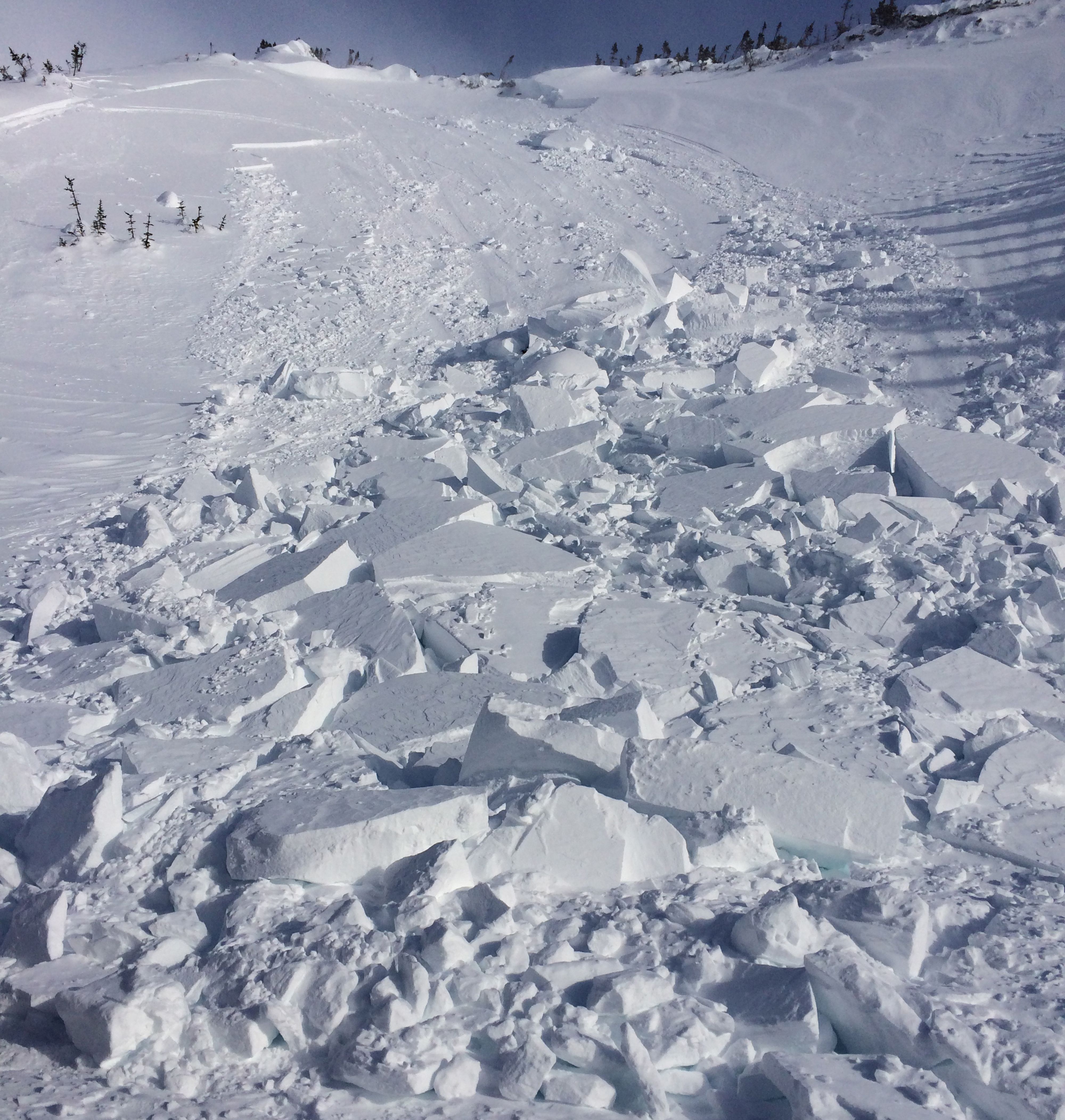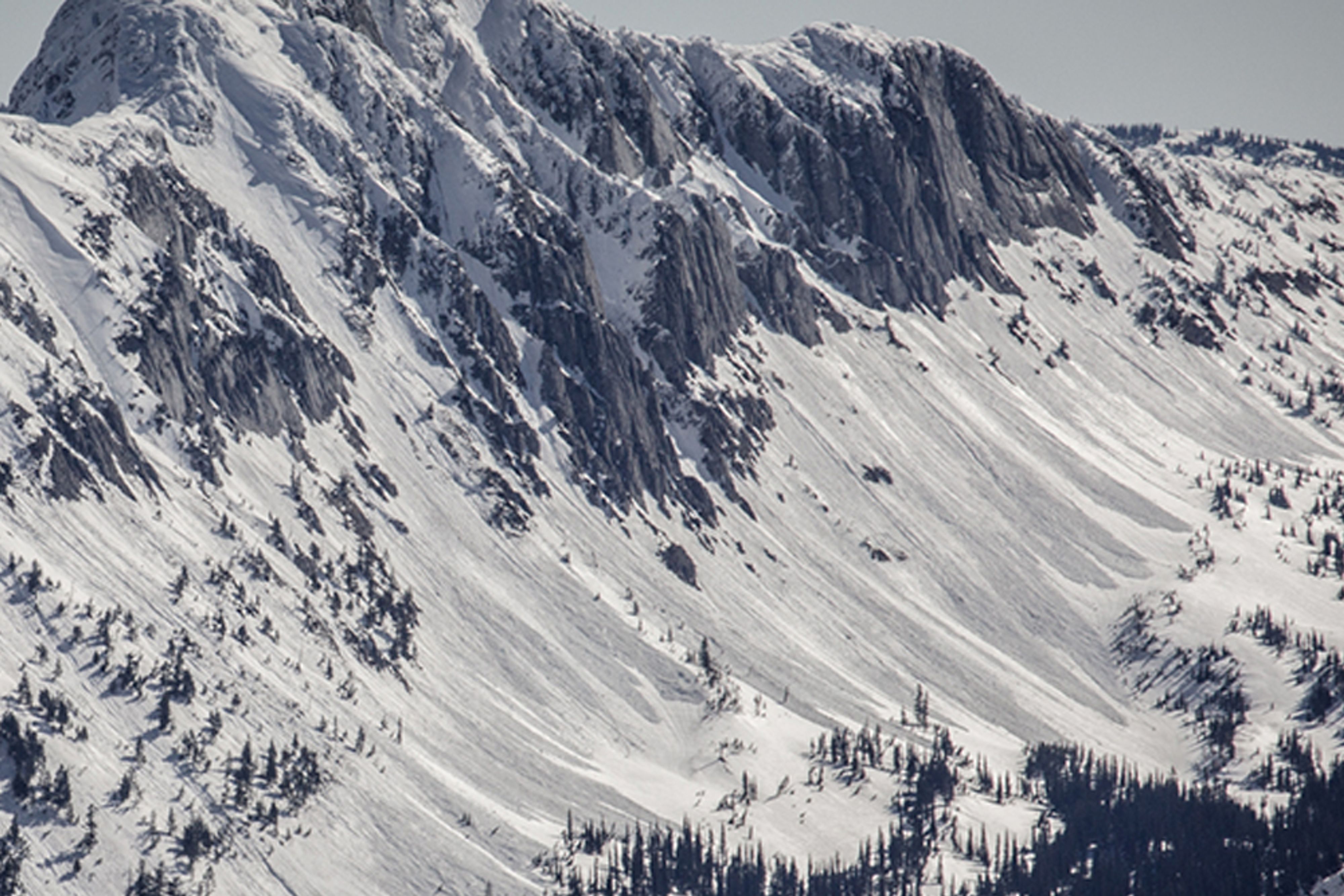Types of Avalanches
There are three main types of avalanches that backcountry users may encounter:
Slab avalanches
These are, by far, the most dangerous types of avalanches for people. They occur when a more dense layer of snow, known as a slab, slides along a weakness in the snowpack, known as a weak layer. A slab will move very quickly downhill, up to 130 km/h, starting off as a cohesive unit and shattering into smaller pieces as it descends.

Loose snow avalanches
Loose snow avalanches happen when poorly bonded surface snow slides downhill under its own weight. Sometimes called sluffs, these types of avalanches are generally smaller and less dangerous than slab avalanches, but they can still pose a hazard in the wrong terrain.

Cornices
Cornices are overhanging masses of wind-deposited snow that protrude from sharp terrain features like ridges or peaks. These beautiful structures can be deadly, breaking off in response to changing weather or the weight of a person or machine. When they fail, tonnes of snow falls on the slope below, forming an avalanche or potentially triggering an even bigger avalanche.
